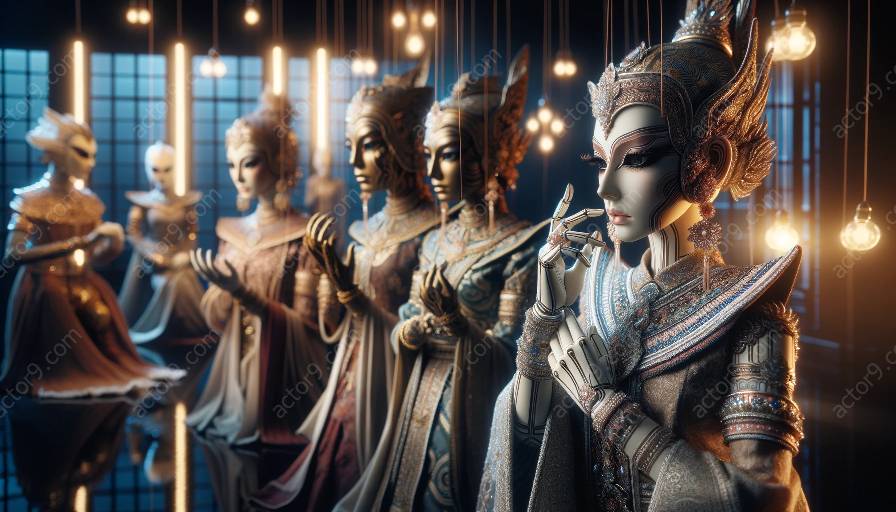Puppetry is a captivating art form that deeply influences the audience experience through various elements, including costume and makeup design. These creative aspects play a significant role in shaping the perception, emotional connection, and storytelling within puppet performances. Understanding the impact of costume and makeup design in puppetry can provide valuable insights into the intricate connections between these elements and audience engagement.
Costumes in Puppetry
Costumes are an essential component of puppetry, as they contribute to the overall aesthetic and character portrayal. The design and creation of puppet costumes are carefully crafted to reflect the personality, traits, and storyline of each puppet character. Whether it's the intricate detailing of a historical costume or the whimsical appearance of a fantastical creature, costumes in puppetry serve as visual cues that help the audience connect with the characters and their narrative.
Furthermore, costumes can enhance the expressiveness of puppets, as they often feature specific textures, colors, and patterns that complement the puppet's movements and actions. For example, flowing robes may convey a sense of elegance and grace, while rugged attire could signify resilience and strength. These visual cues, coupled with the puppeteer's manipulation, create a holistic performance that resonates with the audience on a deeper level.
Makeup Design in Puppetry
Makeup design is another pivotal aspect of puppetry that significantly influences audience perception. Although the application of makeup on puppet characters may differ from that of human actors, it serves a similar purpose in expressing emotions, defining features, and creating visual impact. The careful use of colors, shading, and contours in puppet makeup design enhances the expressiveness and distinctiveness of each character.
Additionally, makeup design in puppetry can transform the perception of puppets, making them appear more lifelike, otherworldly, or anthropomorphic. Through skillful application, makeup can evoke empathy, curiosity, or even awe in the audience, fostering a deeper emotional connection with the puppet characters and their narrative journey.
The Impact on Audience Perception
Costume and makeup design in puppetry wield a profound influence on audience perception and engagement. The visual appeal and authenticity created through these design elements enrich the storytelling experience, enabling the audience to suspend disbelief and immerse themselves in the puppetry world. The intricate details of costumes and makeup not only foster a sense of realism and believability but also contribute to the overall aesthetic and ambiance of the performance.
Moreover, audience members often form immediate connections with puppet characters based on their visual presentation. Well-crafted costumes and makeup designs can captivate and enchant viewers, eliciting emotional responses and empathetic bonds. As a result, the audience becomes emotionally invested in the narrative, empathizing with the struggles, triumphs, and intricacies of the puppet characters' journeys.
Conclusion
The impact of costume and makeup design in puppetry on audience perception is profound and multifaceted. These creative elements not only enhance the visual appeal of puppet performances but also play a crucial role in shaping the emotional and storytelling aspects of the art form. By recognizing the intricate connections between costume and makeup design and audience engagement, puppeteers and creators can continue to elevate the immersive and captivating nature of puppetry, forging deeper connections with audiences across diverse narratives and themes.


























